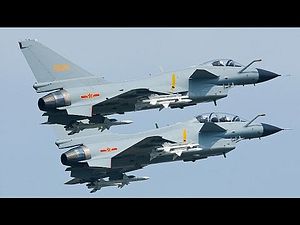South Korea authorities said on Tuesday that two Chinese fighters had entered South Korea’s air defense identification zone (ADIZ) in the East China Sea, near Jeju Island. South Korea responded to the incident by scrambling fighters.
According to Jeon Ha-kyu, a spokesman for South Korea’s Joint Chiefs of Staff (JCS), the incident occurred on Sunday. The Chinese jets left South Korea’s ADIZ after receiving a warning message. “We took necessary surveillance and tactical measures adequately,” he said.
It’s unclear if the jets were operating in that airspace as part of a regularly scheduled patrol or exercise, or if the incident was an intentional attempt to signal China’s assertion of its own ADIZ in that area. In November 2013, China declared an ADIZ in the East China Sea that partially overlapped with South Korea’s zone.
In its report, Yonhap suggested that the incident could have been an attempt by China to express its displeasure with renewed momentum between the United States and South Korea toward the latter’s adoption of Terminal High Altitude Area Defense (THAAD) systems. On Friday, a South Korean official said that THAAD would be helpful for South Korea’s defense.
The THAAD issue has reemerged at the forefront of the U.S.-South Korea alliance after Pyongyang’s nuclear test earlier this month and amid expectations that North Korea is gearing up for a long-range ballistic missile test later this month.
China vehemently rejects the implementation of THAAD in South Korea. Reiterating the Chinese government’s position on the matter last week, Hua Chunying, a spokesperson for the Chinese foreign ministry urged South Korea to “take into account others’ security interests as well as regional peace and stability.” She further urged “relevant countries” to use “caution,” noting that the “situation on the Korean Peninsula is highly sensitive.”
As I discussed early last year, diplomatic rhetoric between Seoul and Beijing has gotten exceptionally heated over the THAAD issue, despite an otherwise good working diplomatic relationship. Kim Min-seok, a South Korean spokesman for the defense ministry, cautioned China that while “a neighboring country can have its own opinion on the possible deployment of the THAAD system here by the U.S. forces in South Korea … it should not try to influence our security policy.”
The overlapping ADIZ issue between the two countries has largely not been addressed in a serious bilateral setting, barring a brief high-level meeting in late 2013. South Korea expanded its ADIZ in December 2013, days after China announced the creation of its ADIZ. The newly expanded ADIZ covered Ieodo, a submerged rock, that sits in the overlapping exclusive economic zones of China and South Korea.

































